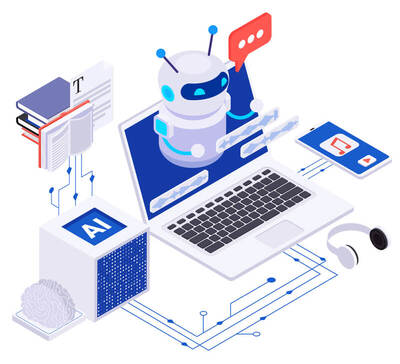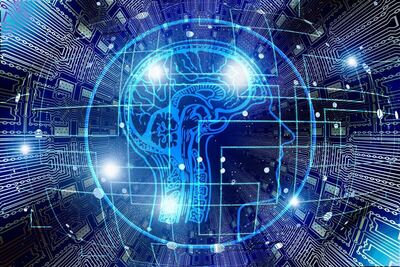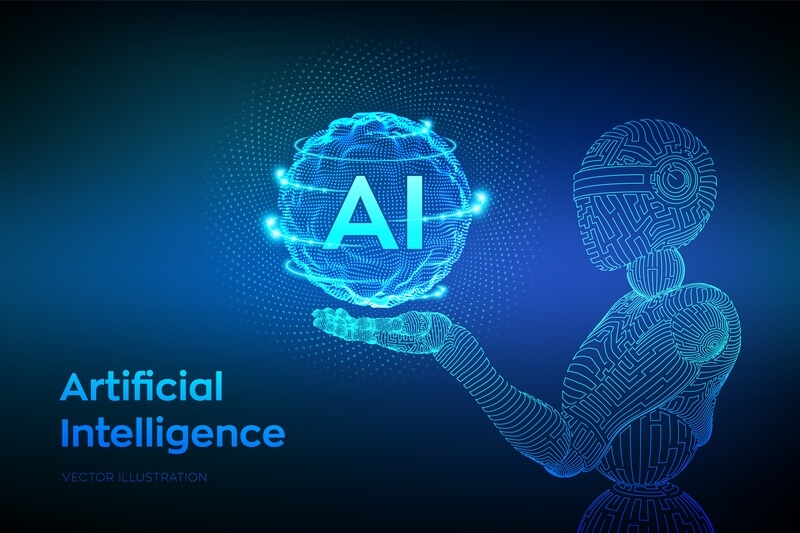In the realm of technology, one term that frequently makes headlines is “Artificial Intelligence” or AI. Often, discussions surrounding AI can seem complex and intimidating, but in simple terms, AI is the science of creating smart machines capable of mimicking human intelligence. Let’s break down this concept and explore how AI works in straightforward language.
What is Artificial Intelligence in Simple Words?

At its core, Artificial Intelligence refers to the development of computer systems that can perform tasks that typically require human intelligence. These tasks encompass a wide range of activities, from problem-solving and decision-making to speech recognition and visual perception. In essence, AI aims to equip machines with the ability to learn, reason, and adapt to different situations.
Types of Artificial Intelligence:
Diving into the world of Artificial Intelligence reveals two distinct realms: Narrow AI, specializing in specific tasks like virtual assistants, and the elusive goal of General AI, aiming to replicate human-like intelligence across diverse domains. Understanding these types is key to grasping the evolving landscape of AI technology.
1. Narrow AI (Weak AI):
Narrow AI, often referred to as Weak AI, represents a specialized form of artificial intelligence designed to excel in a particular task or domain. Unlike its counterpart, General AI, which aspires to emulate broad human cognitive abilities, Narrow AI is tailored for specific functions. Examples abound in our daily lives, from voice-activated personal assistants like Siri and Alexa to recommendation algorithms on streaming platforms. These systems showcase remarkable proficiency within their designated scopes, demonstrating the practical applications and effectiveness of Narrow AI in addressing targeted challenges. While it may lack the comprehensive adaptability of General AI, Narrow AI plays a pivotal role in streamlining and enhancing various facets of technology and daily experiences.
2. General AI (Strong AI):
General AI, often referred to as Strong AI, represents the pinnacle of artificial intelligence aspirations. In contrast to Narrow AI, which excels at specific tasks, General AI aims to emulate the comprehensive cognitive abilities of human intelligence. The ultimate goal is to create machines capable of understanding, learning, and adapting across a multitude of domains, mirroring the versatile problem-solving capabilities inherent in human thinking. While General AI remains a formidable challenge and an ongoing area of research, its realization would signify a groundbreaking leap in the evolution of artificial intelligence, reshaping the way machines interact with and comprehend the world.
How Does AI Work?

The functioning of AI involves a combination of data, algorithms, and computing power. Here’s a simplified breakdown of the AI process:
1. Data Collection:
AI systems rely on vast amounts of data to learn and make decisions. This data can include text, images, videos, and more. The quality and quantity of data significantly impact the effectiveness of an AI model.
2. Training the Model:
In the training phase, the AI model is exposed to the collected data. The model learns patterns, associations, and correlations within the data through a process called machine learning. This is where algorithms come into play, helping the AI system recognize and understand patterns.
3. Testing and Validation:
Once trained, the AI model undergoes testing to ensure its accuracy and effectiveness. Validation helps identify any shortcomings or biases within the model, allowing developers to refine and improve its performance.
4. Deployment:
After successful training and validation, the AI model is deployed to perform its designated tasks. It can now process new data and make predictions or decisions based on what it has learned during training.
By unraveling the mystery of Artificial Intelligence in simple terms, we hope this guide provides a clearer understanding of the technology shaping our digital landscape. As AI continues to evolve, so does our ability to harness its potential for solving complex problems and enhancing various aspects of our daily lives.
FAQs:
AI refers to the development of computer systems that can perform tasks requiring human intelligence. These tasks include problem-solving, learning, and decision-making.
AI works by processing large amounts of data through algorithms during a training phase. The model learns patterns and associations, allowing it to make predictions or decisions when presented with new, similar data.
There are two main types of AI: Narrow AI (specialized in specific tasks like voice recognition) and General AI (aspiring to replicate human-like intelligence across various domains).
Data is essential for training AI models. The more diverse and relevant the data, the better the AI system can learn and make accurate predictions or decisions.
AI is widely used in various fields, including virtual assistants (like Siri), recommendation algorithms, autonomous vehicles, healthcare diagnostics, and more. Its applications continue to expand as technology advances.

